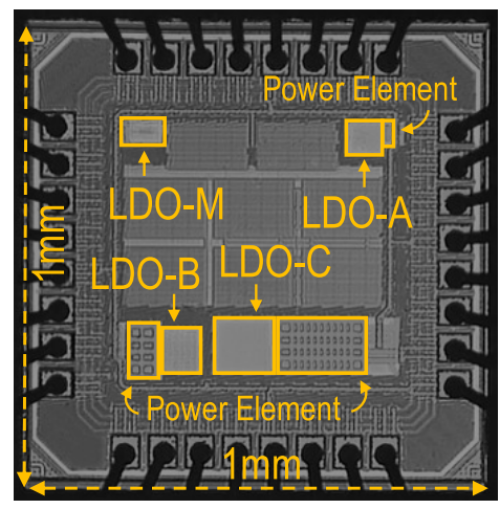 |
Advancements in power and size reduction for integrated circuits (IC) enable integration of self-powered systems into mm-scale fiber strand. Moving towards intricate fiber networks where multiple subsystems interact within textiles or garments, energy harvesting and power management units (EHPMU) require full autonomy, ultra-low quiescent power, high efficiency, and a mm-scale footprint. Additionally, they must coordinate energy across distributed subsystems for enhanced system viability and scalability. A switched-capacitor (SC) based ultra-low-power (ULP) EHPMU [1] realizes distributed energy sharing but its cascade structure restricts the efficiency and dynamic range (<5µW). Also, its single-rail-sharing architecture for distributed systems forces all subsystems to interact with a shared rail, necessitating extra dedicated converters, thereby increasing cost. Existing multi-input single-inductor multi-output (MISIMO) EHPMUs [2-7] achieve high efficiency with a single power-delivery stage, but they either consume >100nW quiescent power [3-7], have <1000× dynamic range [3][5], lack full autonomy [3][4][6][7], or require large inductor (22µH) with low efficiency due to conventional buck-boost (CBB) conversion [2]. Furthermore, none of them support distributed systems. As shown in the top of Fig. 1, we address these limitations with a fully autonomous triple-input hybrid-inductor-capacitor multi-output (TIHICMO) EHPMU that can harvest energy from dual input sources, regulate three custom output rails, adaptively switch among multi-conversion methods, cold startup (CS) from all the inputs/outputs, and enable energy recycling and sharing among multiple rails. This EHPMU achieves a 5.8nA quiescent current, a wide dynamic range of 8.8x104, a peak efficiency of 90.1%, and a >90% reduction in inductor size compared to [2][7] using a 3×3×1.3mm 200mΩ DCR inductor.
|




